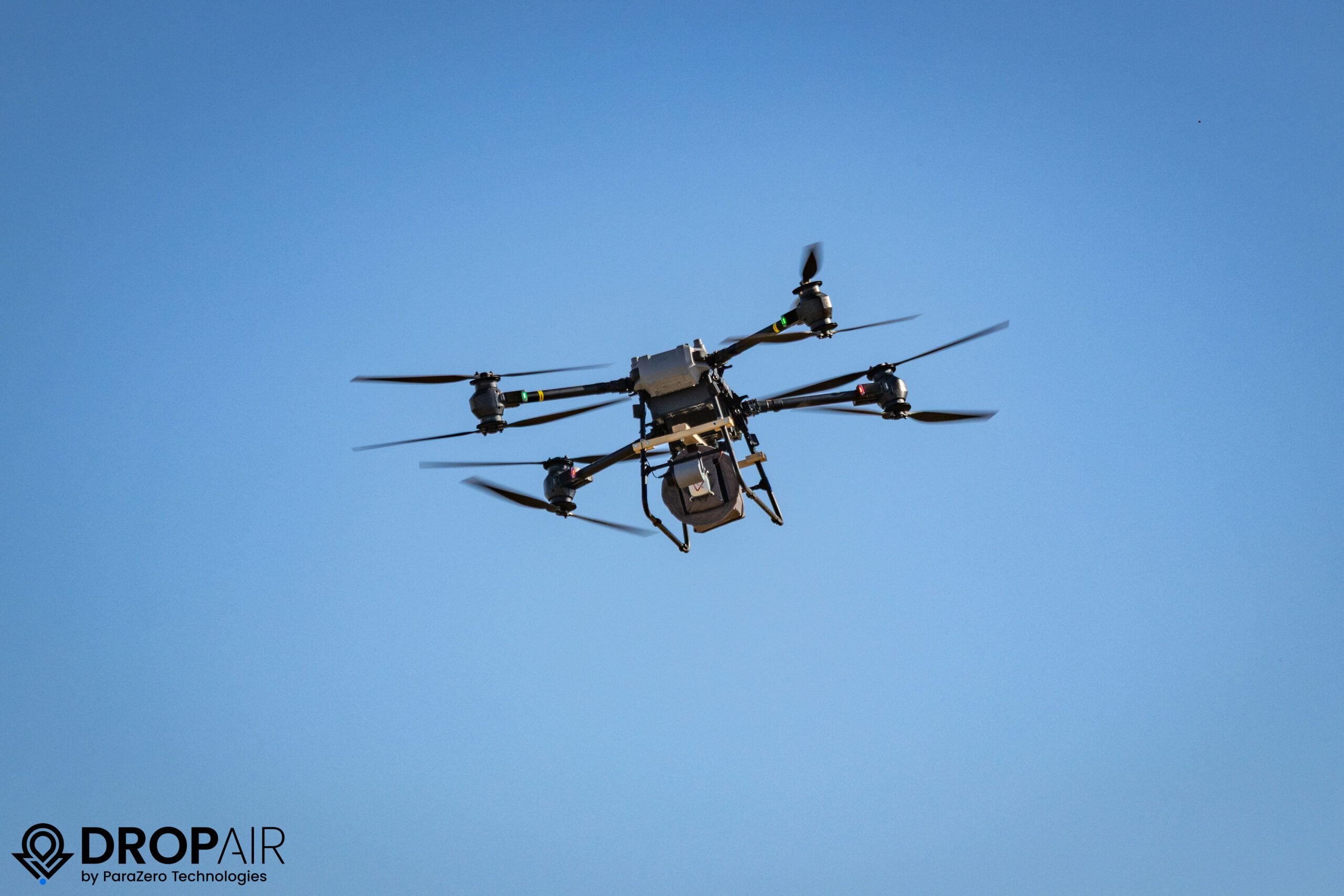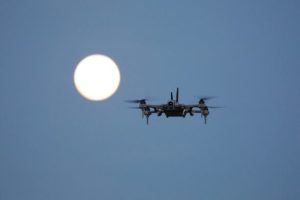Drones on the Frontline: How ParaZero’s Air-Drop Parachute System Delivers Lifesaving Blood to the Battlefield
In the modern world of warfare, where speed and resourcefulness are paramount, drones are emerging as indispensable tools for delivering essential medical supplies directly to the battlefield. At the forefront of this vital innovation is ParaZero’s DropAir Precision Airdrop System, a groundbreaking development transforming emergency responses in both military and humanitarian contexts.
The Urgency: Why Blood Delivery by Drone Matters
In regions devastated by conflict or disaster, every second counts, often determining matters of life and death. Supplying whole blood for transfusions to injured personnel presents numerous obstacles: treacherous landscapes, hostile threats, and the ever-present danger to human couriers. Traditional logistic methods—convoys or helicopters—face risks, delays, or are sometimes unfeasible. Contrastingly, drones are swift, expendable, and capable of reaching areas inaccessible to human-operated vehicles.
However, precision and payload safety are pivotal. Blood components are delicate; exposure to heat or rough landings can render them unusable. ParaZero addresses these challenges with its innovative parachute delivery system.
Meet DropAir: How ParaZero’s System Works
The DropAir system integrates cutting-edge drone technology with a patented, automated parachute mechanism, enabling precise airdrops in difficult conditions:
- A drone, like the rugged DJI FlyCart, hovers at heights of up to 600 feet.
- It deploys one or more sealed blood units (holding up to five packages, each weighing around 5 kilograms).
- A brief free-fall allows packages to efficiently navigate through wind currents.
- At the right moment, a small parachute initially deploys, followed by a larger chute, ensuring a controlled descent. This “high-altitude low-opening” (HALO) approach minimizes drift and ensures a gentle landing.
- Impact energy is minimized, ensuring blood bags remain intact and functional.
“We don’t miss the target, but we also minimize the impact energy to such a level that the blood can endure,” explains Lavi from ParaZero.
The DropAir system boasts reliability, having successfully undergone rigorous testing “50 out of 50 times,” meeting or surpassing military-grade expectations.
Operational Advantages: Speed, Safety, and Versatility
Why Drones + Parachutes are Superior:
- Speed: Bypassing impediments such as roadblocks or sniper zones, drones reach destinations within minutes.
- Safety: Human operators remain unharmed, and drone loss is preferable to losing medical personnel or drivers.
- Accuracy: Timely parachute deployment overcomes wind drift, delivering supplies to the required locations—be it urban ruins or wooded areas.
- Autonomy: DropAir is adaptable to both manual and autonomous drones, compatible for day, night, and beyond-visual-line-of-sight (BVLOS) operations.
One System, Many Scenarios:
- Military: Supplying advanced field hospitals or forward medics in high-risk zones without further endangering personnel.
- Disaster Relief: Delivering essential items like food, plasma, or medicines to those affected by floods or other catastrophes.
Real-World Deployments and Testing
The DropAir system extends beyond the lab. It has proven its effectiveness in field tests and military exercises, including:
- Israeli Ministry of Defense: Following extensive testing phases, ParaZero’s system is transitioning to broader use, demonstrating that blood units can be dropped without compromising viability.
- U.S. Army Exercises: During exercises at Fort Irwin and in Lithuania, drones delivered simulated blood to advance teams, reducing resupply times and lowering risks for human couriers.
“Using drone technology means not risking soldiers to deliver blood into hostile areas. While drones may seem expendable, they offer protection by preserving human life.”
— Capt. Jessica Knoll, U.S. Army
The Science of Safe Delivery: Why Parachutes Matter
Unlike scenes in movies where supply drops are erratic, ParaZero’s innovation lies in its precision, achieved through its parachute system:
| Feature | Traditional Airdrop | ParaZero DropAir System |
|---|---|---|
| Drift (distance from target) | Dozens of meters | A few feet |
| Impact energy | Can rupture blood units | Safely minimized |
| Weather adaptability | Often erratic | Parachute deploys late, adapts |
| Payload types | Bulky, rugged goods only | Fragile blood, plasma, and more |
| Autonomy | Manual/limited | Fully autonomous possible |
This method draws from HALO parachuting—initially for covert military insertions, now refined for supply deliveries.
The Technology Behind the System
What Makes DropAir Unique?
- Proprietary parachute deployment: The mechanism activates just before reaching the ground, drastically reducing wind effects.
- Modular package design: Blood units are shielded from temperature variations, impacts, and vibrations, maintaining quality for transfusion.
- Flexible integration: Configurable for various drones from military UAS to commercial models, catering to advancing drone technologies.
- Scalability: A single drone can handle multiple packages, allowing efficient resupply in diverse field points.
Manufacturing and Partners
Founded in 2014, ParaZero quickly established itself in the field of autonomous parachute safety, leveraging its expertise to cater to the growing battlefield need for precision-delivered medical supplies.
Changing the Game: Impact on Military and Humanitarian Operations
With the advent of drone-enhanced blood delivery, the landscape of military and disaster response is transforming:
- For militaries: Medics can promptly stabilize casualties, minimizing support personnel losses.
- For humanitarian teams: Aid reaches survivors efficiently, unaffected by floods, earthquakes, or conflicts.
- For the medical supply chain: Reduced dependence on traditional logistics lowers costs and enhances flexibility.
Recent programs reveal a significant reduction in resupply times—blood is now delivered in minutes, a crucial factor in saving lives during emergencies.
Where Next? The Future for DropAir and Drone Medical Logistics
The DropAir system is progressing rapidly, with Phase II with the Israeli Ministry of Defense involving more rigorous field operations and integration across various platforms. Expansion efforts are targeting larger payloads, additional drones, and wider geographical coverage.
Future prospects include utilizing the technology in civilian healthcare: urban drone blood banks, rural hospital supply chains, and vaccine drops in disaster areas feature prominently. This vision highlights a future where no individual remains out of reach when time is critical.
The Human Story: Behind the Brand
ParaZero’s team unites drone enthusiasts, engineers, and field operatives, many of whom have connections to the military. As CEO Boaz Shetzer asserts:
“Our goal is to revolutionize medical logistics, making crucial supplies more accessible during crises. This has immense potential for military and commercial medical deliveries.”
Their dedication and experience fuel innovations that save lives on challenging days worldwide.
Expert Tips & Takeaways for Agencies Considering Drone Delivery
- Invest in reliability: Seek out systems like DropAir with proven accuracy and safety standards.
- Train for autonomy: Autonomous missions enhance protection and increase speed in reaching patients.
- Adapt to climate: Ensure parachutes and packaging withstand local conditions, utilizing HALO-style openings.
- Plan for integration: The best solutions fit a variety of drones and expand rapidly in emergencies.
- Learn from real missions: Collaborate with technology proven to impact on the ground.
Conclusion
As modern warfare meets innovative drone technology, ParaZero’s DropAir system heralds a new era in lifesaving logistics. With unparalleled accuracy and reliability, this is not science fiction but a definitive reality for military and disaster responders everywhere.
Looking ahead, the sky holds the future. Thanks to solutions like DropAir, urgent assistance truly arrives where it’s needed most.
Are you ready to incorporate drone blood delivery into your operations? Contact our expert team—let’s save lives together, one parachute at a time.













